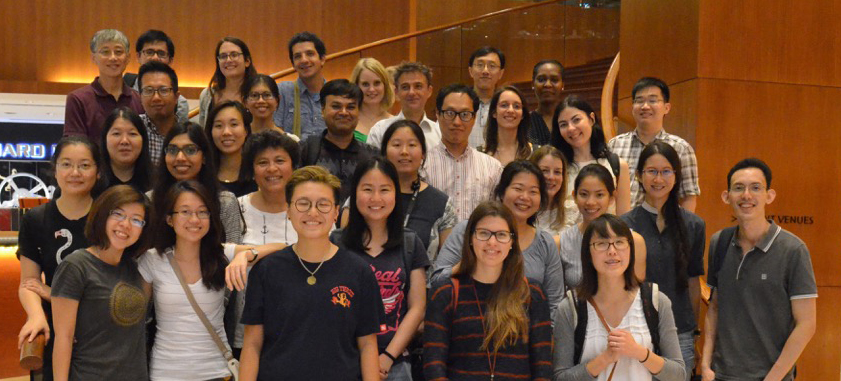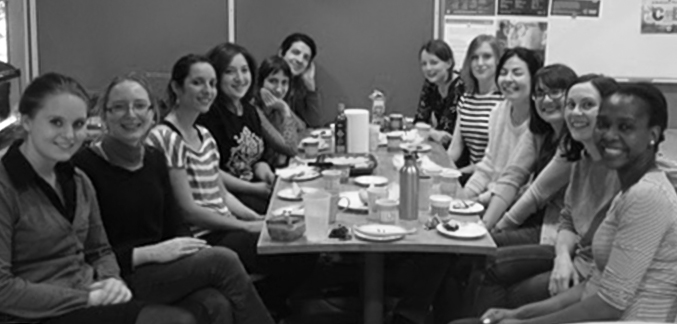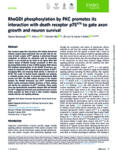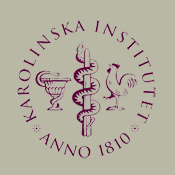|
|
February 22nd, 2017 UPDATE 2017-05-29: Position still open.
We are seeking a talented and enthusiastic researcher with expertise in cellular electrophysiology to advance investigations on the functions and mechanisms of neurotrophic signaling networks in the adult nervous system. The research entails functional assessment of neuronal circuits in the brains of mutant mice lacking different neurotrophic factor receptors in specific subpopulations of neurons.
Candidates will be accepted at the postdoctoral level with a PhD awarded preferably within the last 5 years. Strong and documented expertise in electrophysiological methods as applied to studies of the rodent central nervous system, such as electrophysiological recordings from brain slices, is a requirement for consideration. Experience on calcium imaging would be an advantage.
The successful candidate is expected to be sufficiently independent to set up electrophysiological methods at our laboratory, including supervision of purchase, installation and maintenance of the necessary equipment.
Applications, including CV, list of publications and statement of future interests should be sent to Prof. Carlos Ibanez  . Applicants should arrange to have at least two confidential letters of reference sent independently by referees to this email address. . Applicants should arrange to have at least two confidential letters of reference sent independently by referees to this email address.
Funding is available for an initial period of 3 to 4 years, starting any time during 2017.
February 15th, 2017 UPDATE 2017-05-29: The position has been filled.
We are seeking a talented and enthusiastic researcher with expertise in molecular and cellular neurobiology to advance investigations on the functions and mechanisms of neurotrophic signaling in the nervous system. The research entails studies of death receptor signaling pathways in cell culture models as well as phenotypic characterisation of mutant mice carrying specific mutations in neurotrophic factor receptors. Please refer to our recent list of publications in this area HERE.
Candidates will be accepted at the postdoctoral level (PhD awarded within the last 5 years). Strong and documented expertise in cellular, molecular and histological methods as applied to studies of the rodent nervous system is a requirement for consideration. Experience with genetically modified mice is highly desirable. The successful candidate is expected to be sufficiently independent to formulate questions, design experiments and perform research.
Our group belongs to a network of laboratories dedicated to different aspects of neuroscience research and provides a strong environment for scientific growth and career development.
Applications, including CV, list of publications and statement of future interests should be sent to Prof. Carlos Ibanez  . Applicants should arrange to have at least two confidential letters of reference sent independently by referees to this email address. . Applicants should arrange to have at least two confidential letters of reference sent independently by referees to this email address.
Funding is available for an initial period of 3 years, starting any time during 2017.
Deadline for application is March 7, 2017.
January 18th, 2017 Fellows from the KI lab flew to Singapore for a 2 day retreat with the NUS group on 16th and 17th of January 2017. After 4 years of joint lab meetings over Skype, fellows of both groups enjoyed an opportunity to discuss common projects and ideas face to face. We were joined by the NUS and UCSD groups of Prof. Ed Koo and had joint plenary and also parallel sessions, as well as group building activities, as shown in the photo below.

January 10th, 2017 In this new paper, we show how the GFRα1 receptor regulates Purkinje cell migration independently of GDNF or RET, by limiting the function of NCAM. The paper has just been published in Cell Reports.
During embryonic development of the cerebellum, Purkinje cells (PCs) migrate away from the ventricular zone to form the PC plate. The mechanisms that regulate PC migration are incompletely understood. Here, we report that the neurotrophic receptor GFRα1 is transiently expressed in developing PCs and loss of GFRα1 delays PC migration. Neither GDNF nor RET, the canonical GFRα1 ligand and co-receptor, respectively, contribute to this process. Instead, we found that the neural cell adhesion molecule NCAM is co-expressed and directly interacts with GFRα1 in embryonic PCs. Genetic reduction of NCAM expression enhances wild-type PC migration and restores migration in Gfra1 mutants, indicating that NCAM restricts PC migration in the embryonic cerebellum. In vitro experiments indicated that GFRα1 can function both in cis and trans to counteract NCAM and promote PC migration. Collectively, our studies show that GFRα1 contributes to PC migration by limiting NCAM function.
Read the full paper HERE.
December 10th, 2016 In our latest paper, we show how thalamo-cortical axons regulate the radial dispersion of neocortical GABAergic interneurons. The paper has just been published in eLife.
Neocortical GABAergic interneuron migration and thalamo-cortical axon (TCA) pathfinding follow similar trajectories and timing, suggesting they may be interdependent. The mechanisms that regulate the radial dispersion of neocortical interneurons are incompletely understood. In this new study we report that disruption of TCA innervation, or TCA-derived glutamate, affected the laminar distribution of GABAergic interneurons in mouse neocortex, resulting in abnormal accumulation in deep layers of interneurons that failed to switch from tangential to radial orientation. Expression of the KCC2 cotransporter was elevated in interneurons of denervated cortex, and KCC2 deletion restored normal interneuron lamination in the absence of TCAs. Disruption of interneuron NMDA receptors or pharmacological inhibition of calpain also led to increased KCC2 expression and defective radial dispersion of interneurons. Thus, although TCAs are not required to guide the tangential migration of GABAergic interneurons, they provide crucial signals that restrict interneuron KCC2 levels, allowing coordinated neocortical invasion of TCAs and interneurons.
Read the full paper HERE. (Supplemental information 31.6MB)
October 28th, 2016 The Swedish Research Council (Vetenskapsrådet) has awarded a new grant to our KI group for work on neurotrophic signaling in the adult nervous system and its importance for neuropsychiatric disorders. Tack för förtroendet!
October 27th, 2016 The Weizmann Institute in Israel has named Carlos Ibanez Weston Visiting Professor in the Faculty of Biochemistry, Department of Biomolecular Sciences for 3 years, starting October 2016 to conduct educational and research activities.
July 4th, 2016 Wei Wang has a BSc in Public Health from Medical College of Southeast University, Nanjing, China, and a MSc in Environmental Toxicology from Shanghai Medical College, Fudan University, Shanghai, China. She has worked as Assistant Researcher at the Shanghai Institute of Applied Physics, Shanghai Institutes for Biological Sciences and the University of Gothenburg in Sweden. She joins our group to assist with histological methods and imaging of tissue samples from our mouse models.
May 18th, 2016 In our latest paper, we show how dimers of the p75NTR neurotrophin receptor are indipensable for p75NTR-mediated cell death in the central nervous system. The paper has just been published in the Journal of Neuroscience.
The oligomeric state and activation mechanism that enable p75 NTR to mediate these effects have recently been called into question. In this new study, we have investigated mutant mice lacking the p75NTR death domain (DD) or a highly conserved transmembrane (TM) cysteine residue (Cys 259) implicated in receptor dimerization and activation. Neuronal death induced by proneurotrophins or epileptic seizures was assessed and compared with responses in p75NTR knock-out mice and wild-type animals. Proneurotrophins induced apoptosis of cultured hippocampal and cortical neurons from wild-type mice, but mutant neurons lacking p75NTR, only the p75NTR DD, or just Cys259 were all equally resistant to proneurotrophin-induced neuronal death. Homo-FRET anisotropy experiments demonstrated that both NGF and proNGF induce conformational changes in p75 NTR that are dependent on the TM cysteine. In vivo, neuronal death induced by pilocarpine-mediated seizures was significantly reduced in the hippocampus and somatosensory, piriform, and entorhinal cortices of all three strains of p75 NTR mutant mice. Interestingly, the levels of protection observed in mice lacking the DD or only Cys 259 were identical to those of p75 NTR knock-out mice even though the Cys 259 mutant differed from the wild-type receptor in only one amino acid residue. We conclude that, both in vitro and in vivo, neuronal death induced by p75NTR requires the DD and TM Cys259, supporting the physiological relevance of DD signaling by disulfide-linked dimers of p75NTR in the CNS.
Read the full paper HERE.
February 23rd, 2016 UPDATE 2016-05-25: The position has been filled.
We are seeking a laboratory technician to help us with histological studies of our lines of mutant mice. The candidates should have documented expertise in histological techniques, including tissue sectioning, immunohistochemistry and microscopy. Experience in histological analysis of nervous tissue is preferred. This is a project employment for a period of up to 2 years.
Application, including CV and reference names of two latest project supervisors should be sent to Prof. Carlos Ibanez 
Deadline for application is 29th April, 2016
February 20th, 2016
A targeted effort to identify novel neurotrophic factors for midbrain dopaminergic neurons resulted in the isolation of GDNF (glial cell line-derived neurotrophic factor) from the supernatant of a rat glial cell line in 1993. Over two decades and 1200 papers later, the GDNF ligand family and their different receptor systems are now recognized as one of the major neurotrophic networks in the nervous system, important for the devel- opment, maintenance and function of a variety of neurons and glial cells. The many ways in which the four mem- bers of the GDNF ligand family can signal and function allow these factors to take part in the control of multiple types of processes, from neuronal survival to axon guidance and synapse formation in the developing nervous system, to synaptic function and regenerative responses in the adult. In this review, recently published in Neurobiology Of Disease, basic aspects of GDNF signaling mechanisms and receptor systems are first summarized followed by a review of current knowledge on the physiology of GDNF activities in the central nervous system, with an eye to its relevance for neurodegenerative and neuropsychiatric diseases. Read the full paper HERE.
December 9th, 2015 Our latest paper describes new NMR structures of the death domain in complex with downstream interactions RhoGDI and RIP2 as well as the death domain dimer. These are the first structural insights into p75NTR signaling and reveal many surprises for the death domain superfamily. The paper is now available online at eLife.
Death domains (DDs) mediate assembly of oligomeric complexes for activation of downstream signaling pathways through incompletely understood mechanisms. We report structures of complexes formed by the DD of p75 neurotrophin receptor (p75NTR) with RhoGDI, for activation of the RhoA pathway, with caspase recruitment domain (CARD) of RIP2 kinase, for activation of the NF-kB pathway, and with itself, revealing how DD dimerization controls access of intracellular effectors to the receptor. RIP2 CARD and RhoGDI bind to p75NTR DD at partially overlapping epitopes with over 100-fold difference in affinity, revealing the mechanism by which RIP2 recruitment displaces RhoGDI upon ligand binding. The p75NTR DD forms non-covalent, low-affinity symmetric dimers in solution. The dimer interface overlaps with RIP2 CARD but not RhoGDI binding sites, supporting a model of receptor activation triggered by separation of DDs. These structures reveal how competitive protein-protein interactions orchestrate the hierarchical activation of downstream pathways in non-catalytic receptors.
November 24th, 2015 The Swedish Cancer Society (Cancerfonden) has awarded a new grant to our KI group for work on ALK7, p75 and GDNF signalling and biology. Tack för förtroendet!
September 11th, 2015 The University of Palermo in Italy has named Carlos Ibanez Visiting Professor at the Department of Experimental Biomedicine and Clinical Neuroscience, starting September 2015 to participate in research and didactic activities.
March 5th, 2015 In our latest paper, we show that the p75 neurotrophin receptor p75NTR can signal very differently in diferent types of neurons. Using pharmacological and genetic techniques, we demonstrate that this is partly controlled by differential proteolytic cleavage of the receptor in different cell types. The new work has appeared online in the Journal of Cell Science.
Signaling by the p75 neurotrophin receptor (p75NTR) is often referred to as cell-context dependent, but neuron-type specific signaling by p75NTR has not been systematically investigated. Here, we report that p75NTR signals very differently in hippocampal neurons (HCNs) and cerebellar granule neurons (CGNs), and present evidence indicating that this is partly controlled by differential proteolytic cleavage. NGF induced caspase-3 activity and cell death in HCNs but not in CGNs, while it stimulated NFκB activity in CGNs but not in HCNs. HCNs and CGNs displayed different patterns of p75NTRproteolytic cleavage. While the p75NTR carboxy terminal fragment (CTF) was more abundant than the intracellular domain (ICD) in HCNs, CGNs exhibited fully processed ICD with very little CTF. Pharmacological or genetic blockade of p75NTR cleavage by gamma-secretase abolished NGF-induced upregulation of NFκB activity and enabled induction of CGN death, phenocopying the functional profile of HCNs. Thus, the activities of multifunctional receptors, such as p75NTR, can be tuned into narrower activity profiles by cell-type-specific differences in intracellular processes, such as proteolytic cleavage, leading to very different biological outcomes. Read the full article HERE.
March 4th, 2015 
Left: Annika, Sabrina, Maritina, Karima, Nuria, Favio
Right: Lilian, Christina, Diana, Patricia, Petronella, Claire
October 26th, 2014 In our latest paper, we demonstrate that spatially resolved RNA-seq is ideally suited for high resolution topographical mapping of genome-wide gene expression in heterogeneous anatomical structures such as the mammalian central nervous system. The work has appeared online in Genome Biology.
Cortical interneurons originating from the medial ganglionic eminence, MGE, are among the most diverse cells within the CNS. Different pools of proliferating progenitor cells are thought to exist in the ventricular zone of the MGE, but whether the underlying subventricular and mantle regions of the MGE are spatially patterned has not yet been addressed. In this work, we combined laser-capture microdissection and multiplex RNA-sequencing to map the transcriptome of MGE cells at a spatial resolution of 50 microns. Distinct groups of progenitor cells showing different stages of interneuron maturation were identified and topographically mapped based on their genome-wide transcriptional pattern. Although proliferating potential decreased rather abruptly outside the ventricular zone, a ventro-lateral gradient of increasing migratory capacity was identified, revealing heterogeneous cell populations within this neurogenic structure. Read the full article HERE.
October 6th, 2014 Favio Krapacher obtained his PhD at the Universidad Nacional de Córdoba, Argentina, in December 2013. His thesis work focused on studies of p35 transgenic mice as a model of attention deficit hyperactivity disorder, and included a series of behavioral, pharmacological and biochemical studies. Favio joins the KI team to study the role of Alk4 signaling in controlling the differentiation and migration of specific subtypes of forebrain GABAergic interneurons.
Nuria Gresa-Arribas obtained her PhD at the Universiy of Barcelona, Spain, in 2011. Her thesis examined the neurotoxic role of pro-inflammatory microglial cells and the role of C/EBPs transcription factors. She later worked as postdoctoral fellow under the direction of Dr. Josep Dalmau at the same university for studies of autoimmune neurologic diseases associated with antibodies to neuronal cell surface or synaptic proteins. Nuria will join the KI team in November to pursue studies of p75 signaling mutant mice.
September 8th, 2014 Petronella Johansson trained at Kristianstad Highschool and subsequently pursued doctoral studies at the Scottish Fish Immunology Research Centre, University of Aberdeen, United Kingdom, where she obtained a PhD in 2014. Petronella joins our group to help with mouse breeding and genotyping, as well as molecular techniques and admin duties.
August 26th, 2014 In our latest paper, we report that the sensitivity of fat cells to signals that increase the breakdown of fat is linked to the receptor ALK7. The discovery, which is published in eLife, suggests that ALK7 is an interesting target for future strategies to treat obesity.
The ALK7 receptor is predominantly found in fat cells and tissues involved in controlling the metabolism. Intriguingly, mice with a mutation in ALK7 accumulate less fat than mice with a functional version of the protein. Until now, it has not been known why.
We created mice whose fat cells lack ALK7, but whose other cells all produce ALK7 as normal. We found that fat cells lacking the ALK7 receptor are more sensitive to adrenaline and noradrenaline signals, a finding that can explain why they accumulate less fat even though the mice were on a high-fat diet. Adrenaline and noradrenaline are central players in metabolism. These hormones trigger the burst of energy and increase in heart rate and blood pressure that are needed for the “fight-or-flight” response. The hormones normally stimulate the breakdown of fat, but when nutrients are plentiful, fat cells become resistant to this signal and instead store fat. This mechanism evolved to facilitate energy storage during times of abundant food supply, enhancing survival upon starvation. In the industrialized world where food is constantly accessible, this resistance can cause an unhealthy increase in body fat and result in obesity.
We then investigated if it is possible to prevent obesity by blocking ALK7. At present, there are no known ALK7 inhibitors, but we solved this by generating mice with a special mutation in ALK7 which renders it sensitive to inhibition by a chemical substance. This made it possible for us to block the receptor at any time in an otherwise normal adult animal.
– Using this approach, we could get these mice to be leaner on a high fat diet simply by administration of the chemical. This suggests that acute inhibition of the ALK7 receptor can prevent obesity in adult animals, says Tingqing Guo, first author of the study.
We have also showed that the ALK7 receptor works in a similar way in human fat cells as it does in mice.
– Overall, these results suggest that blockade of the ALK7 receptor could represent a novel strategy to combat human obesity, says Carlos Ibanez, principal investigator of the study.
The work was supported by grants from the European Research Council, Swedish Research Council, Strategic Research Program in Diabetes of Karolinska Institutet, Swedish Cancer Society, Knut and Alice Wallenberg Foundation, the National University of Singapore and the National Medical Research Council of Singapore. eLife is a peer-reviewed open-access scientific journal established at the end of 2012 by Nobel Prize Winner Randy Schekman, with support from the Howard Hughes Medical Institute, Max Planck Society and Wellcome Trust.
The paper is freely accessible and can be found HERE.
April 20th, 2014 Work at Carlos Ibanez laboratory focuses on understanding the functions and signaling mechanisms of growth factors and their receptors in neural development and injury responses and metabolic regulation, for the development of better therapies to diseases of the nervous system and metabolic disorders.
Carlos Ibanez is Professor of Neuroscience at the Karolinska Institute in Stockholm, Sweden.
Postdoctoral fellows are currently being recruited to the laboratory to advance research on growth factor receptor signaling and function in neurodevelopment and neural injury. We are seeking talented, innovative and enthusiastic researchers with a PhD awarded within the last 5 years. Candidates with expertise in i) molecular and cellular neurobiology, neurodevelopment or ii) molecular and cellular endocrinology, metabolic research and iii) mouse genetics are encouraged to apply.
Applications, including CV, list of publications and statement of future interests should be sent to Prof. Carlos Ibanez ( ). Applicants should arrange to have at least two confidential letters of reference sent independently by referees to this email address. ). Applicants should arrange to have at least two confidential letters of reference sent independently by referees to this email address.
Funding is available for an initial period of 2 to 3 years, starting any time during 2014.
Deadline for application is May 10, 2014
October 18th, 2013 Diabetologia has now published online our latest paper describing differential actions of activins A and B and Smad proteins 2 and 3 on the regulation of insulin secretion by pancreatic beta cells (Wu et al., 2013).
Glucose-stimulated insulin secretion (GSIS) from pancreatic beta-cells is regulated by paracrine factors whose identity and mechanisms of action are incompletely understood. Activins are expressed in pancreatic islets and have been implicated in the regulation of GSIS. Activins A and B signal through a common set of intracellular components, but it is unclear whether they display similar or distinct functions in glucose homeostasis. Glucose homeostatic responses were examined in mice lacking activin B and in pancreatic islets derived from these mutants. The ability of activins A and B to regulate downstream signalling, ATP production and GSIS in islets and in beta-cells was compared. Mice lacking activin-B displayed elevated serum insulin levels and glucose-stimulated insulin release. Injection of a soluble activin B antagonist phenocopied these changes in wild type mice. Isolated pancreatic islets from mutant mice showed enhanced GSIS which could be rescued by exogenous activin B. Activin B negatively regulated GSIS and ATP production in wild type islets, while activin-A displayed opposite effects. The downstream mediator Smad3 responded preferentially to activin B in pancreatic islets and beta-cells, while Smad2 showed preference for activin A, indicating distinct signalling effects of the two activins. In line with this, overexpression of Smad3, but not Smad2, decreased GSIS in pancreatic islets. These results reveal a tug-of-war between activin ligands in the regulation of insulin secretion by beta-cells and suggest that manipulation of activin signalling could be a useful strategy for the control of glucose homeostasis in diabetes and metabolic disease.
Read the full article HERE.
September 27th, 2013 The European Research Council (ERC) has announced that Carlos Ibanez is among the winners of the 2013 Advanced Grant competition. At 2.5 million Euros –for a 5 year project– the ERC Advanced Grant has become one of the most prestigious research awards in Europe. In this round, a total of 284 researchers were awarded from over 2,400 applicants, a success rate of 11.8%.
July 9th, 2013 Lilian Kisiswa obtained a PhD in 2011 in Visual Neursocience at Cardiff University, UK, under the direction of Prof. James E Morgan. Her PhD thesis was entitled “The role of inhibitor of apoptosis (IAPs) in retinal ganglion cell death and dendrite remodelling“. She then did postdoctoral studies at the Department of Molecular Biosciences, School of Biosciences, Cardiff University, under the direction of Prof. Alun M Davies. Her postdoctoral work on reverse signaling by TNF ligands was recently published in Nature Neuroscience. Lilian will join the Stockholm p75 team in August 2013 to investigate the interplay between RIP2 and RhoGDI in the control of axon growth and degeneration by p75NTR and its ligands.
Diana Fernandez Suarez obtained her PhD in 2012 at the Center for Applied Medical Research University of Navarra, Pamplona, Spain, under the direction of Drs.Rafael Franco and Maria Soledad Aymerich. Her PhD thesis was dedicated to anatomical and funcitonal studies of the globus pallidus after manipulation of the endocanabinoid system in animal models of Parkinson’s disease. She performed postdoctoral work at the same laboratory during the past year. Diana will join the KI GDNF team in August 2013 to investigate adult functions of GFRa1 signaling in the healthy and diseased brain.
March 9th, 2013 Work at our laboratory focuses on understanding the functions and signaling mechanisms of neuronal growth factors in neural development, injury responses and metabolic regulation, for the development of better therapies to diseases of the nervous system and metabolism.
Postdoctoral fellows are currently being recruited to the laboratory. We are seeking talented, innovative and enthusiastic researchers with a PhD awarded within the last 10 years. Candidates with expertise in neurobiology, metabolism and mouse genetics are encouraged to apply.
Applications, including CV, list of publications and statement of future interests should be sent to Prof. Carlos Ibanez  . Applicants should arrange to have at least two confidential letters of reference sent independently by referees to this email address. . Applicants should arrange to have at least two confidential letters of reference sent independently by referees to this email address.
Funding is available for an initial period of 2 to 3 years, starting any time during 2013.
Deadline for application is March 31, 2013.
February 10th, 2013 Cold Spring Harbour Perspectives in Biology has published Carlos Ibanez’s review on the structure and physiology of the RET receptor tyrosine kinase as part of their collection of reviews on receptor tyrosine kinases. RET, GDNF family ligands, and GFRα coreceptors activate signaling pathways involved in kidney and nervous system development. RET mutations cause Hirschsprung’s disease and at least four cancers. Read the full paper HERE.
December 21st, 2012 Cell Reports publishes today our latest paper describing a structure-function map of the death domain of the p75 neurotrophin receptor (Charalampopoulos et al. 2012)
Structural determinants underlying signaling specificity in the tumor necrosis factor receptor superfamily (TNFRSF) are poorly characterized and it is unclear whether different signaling outputs can be genetically dissociated. The p75 neurotrophin receptor (p75NTR), also known as TNFRSF16, is a key regulator of trophic and injury responses in the nervous system. In this paper, we describe a genetic approach to dissect p75NTR signaling and decipher its underlying logic. Structural determinants important for regulation of cell death, NF-kB and RhoA pathways were identified in the p75NTR death domain. Pro-apoptotic and pro-survival pathways mapped onto non-overlapping epitopes, demonstrating that different signaling outputs can be genetically separated in p75NTR. Dissociation of JNK and caspase-3 activities indicated that JNK is necessary but not sufficient for p75NTR-mediated cell death. RIP2 recruitment and RhoGDI release were mechanistically linked, indicating that competition for DD binding underlies cross-talk between NF-kB and RhoA pathways in p75NTR signaling. These results provide new insights into the logic of p75NTR signaling and pave the way for a genetic dissection of p75NTR function and physiology.
Read the full paper HERE.
December 11th, 2012 The Knut and Alice Wallenberg Foundation has today appointed Carlos Ibanez as a Wallenberg Scholar. The award includes a research grant of 15 million Swedish crowns over 5 years. Quote from the Foundation’s website: “The Foundation’s purpose is to support Swedish research and thereby strengthen Sweden as a research nation. Since 2009, we have appointed a total of 46 Wallenberg Scholars. The appointed researchers all belong to the international research forefornt in all areas of science, with an emphasis on medicine and the natural sciences, says Peter Wallenberg Jr., vice chairman of the Knut and Alice Wallenberg Foundation.” Read the text of the announcement (in Swedish) HERE and press release from Karolinska Institute HERE.
November 29th, 2012 The Journal of Neuroscience publishes today our paper on the role of the GDNF receptor GFRa1 in the main olfactory system (Marks et al. 2012). In this work, we investigated the consequences of GFRα1 deficiency for mouse olfactory system development and function.
GDNF and its receptor GFRα1 are prominently expressed in the olfactory epithelium (OE) and olfactory bulb (OB), but their importance for olfactory system development has been unknown. In the OE, we found that GFRα1 was expressed in basal precursors, immature olfactory sensory neurons (OSNs), and olfactory ensheathing cells (OECs), but was excluded from mature OSNs. The OE of newborn Gfra1 knock-out mice was thinner and contained fewer OSNs, but more dividing precursors, suggesting deficient neurogenesis. Immature OSN axon bundles were enlarged and associated OECs increased, indicating impaired migration of OECs and OSN axons. In the OB, GFRα1 was expressed in immature OSN axons and OECs of the nerve layer, as well as mitral and tufted cells, but was excluded from GABAergic interneurons. In newborn knock-outs, the nerve layer was dramatically reduced, exhibiting fewer axons and OECs. Bulbs were smaller and presented fewer and disorganized glomeruli and a significant reduction in mitral cells. Numbers of tyrosine hydroxylase-, calbindin-, and calretinin-expressing interneurons were also reduced in newborn mice lacking Gfra1. At birth, the OE and OB of Gdnf knock-out mice displayed comparable phenotypes. Similar deficits were also found in adult heterozygous Gfra1+/− mutants, which in addition displayed diminished responses in behavioral tests of olfactory function. We conclude that GFRα1 is critical for the development and function of the main olfactory system, contributing to the development and allocation of all major classes of neurons and glial cells.
Read the full paper HERE.
November 24th, 2012 
PhD student Carolyn Marks nailed her thesis at the KI library this week. Tradition obliges, and the golden nail went into the wooden slab one more time.
The event marks the final count-down for her thesis defense, to take place on December 7. Attracted by the prospect of champagne and refreshments, fellow lab mates joined in for the occassion.
Photograph by postdoc fellow Tingqing Guo.
|
|
 . Applicants should arrange to have at least two confidential letters of reference sent independently by referees to this email address.
. Applicants should arrange to have at least two confidential letters of reference sent independently by referees to this email address.




